On July 11th and 12th, 2022, humanity stepped into the future.

This almost-perfectly-aligned image composite shows the first JWST deep field’s view of the core of cluster SMACS 0723 and contrasts it with the older Hubble view. Looking at the image details that are absent from the Hubble data but present in the JWST data shows us just how much discovery potential is awaiting JWST scientists.
The James Webb Space Telescope (JWST) released its first scientific images, revealing the Universe in an unprecedented light.

This enhanced view of JWST’s first deep-field image of the cosmos overexposes the brightest galaxies and the cluster’s center in order to better bring out the details present in the fainter, redder, more distant galaxies. This first deep-field view took only half-a-day to acquire with JWST. With 20+ years of data to come, we can only imagine what will be revealed.
The first image was a deep-field view of galaxy cluster SMACS 0723, whose gravity magnifies background objects.
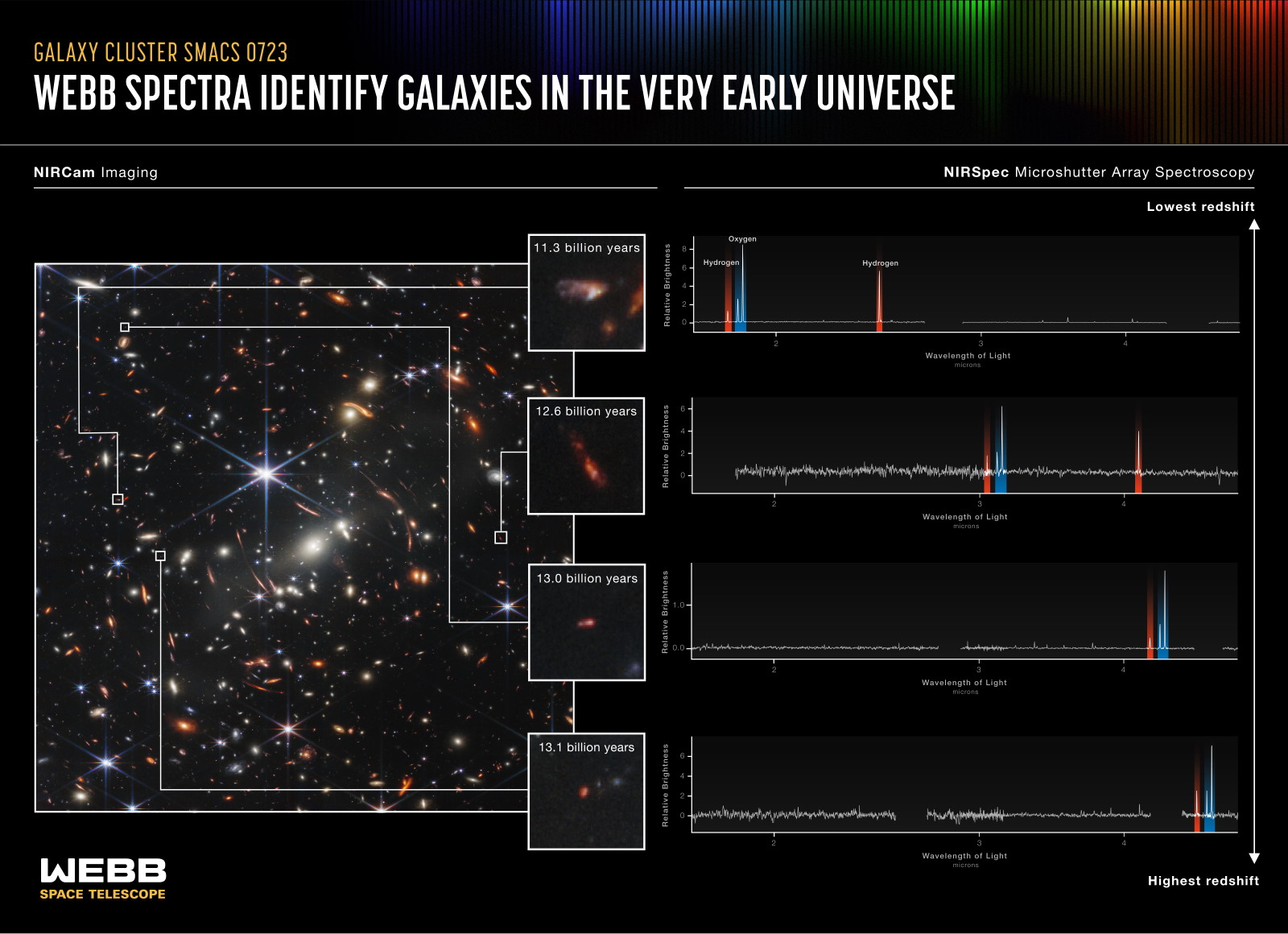
A number of extremely different objects in the JWST image of SMACS 0723 were revealed, and the power of spectroscopy enabled us to determine precisely how far away they are and how much their light is stretched by the expansion of the Universe. This is a powerful demonstration of JWST’s capabilities, as well as an illustration of the capabilities of gravitational lensing.
Containing objects from throughout cosmic history, it previews even deeper, wider-field views ahead.
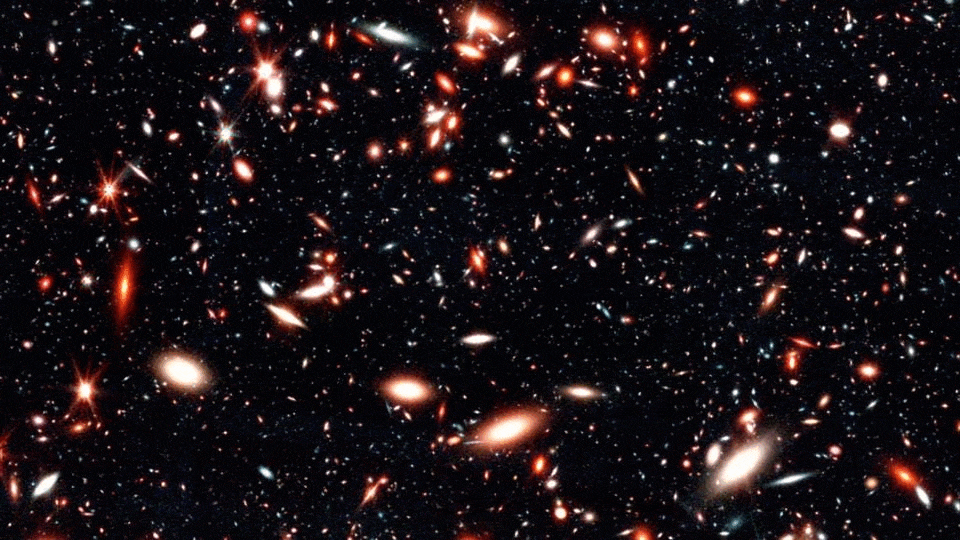
A portion of the Hubble eXtreme Deep Field that’s been imaged for 23 total days, as contrasted with the simulated view expected by James Webb in the infrared. With large-area mosaics such as COSMOS-Web and PANORAMIC, the latter of which takes advantage of pure parallel observing, upcoming, we should not only shatter the cosmic record for most distant galaxy, but should learn about what the earliest luminous objects in the Universe looked like.
But three other targets were also observed with imagers, revealing unexpected, never-before-seen galaxies as well.

This three-panel image shows the view of the Carina Nebula’s “cosmic cliffs” as seen by Hubble (top), JWST’s NIRCam instrument (middle), and JWST’s MIRI instrument (bottom). With its first science release upon us, this new era in astronomy has truly arrived.
The Carina Nebula, located within the Milky Way, is a dusty region rich in gas and stars.
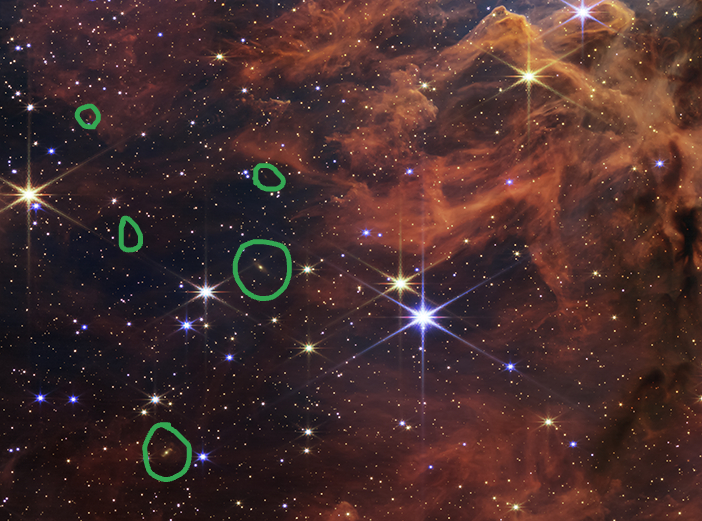
Although they’re difficult to identify by eye, there are numerous galaxies that can be seen poking through the clouds of the Cosmic Cliffs in the Carina Nebula. Many of them have been manually circled here in the cropped image of JWST’s NIRCam instrument.
But numerous galaxies appear through the obscuring matter.
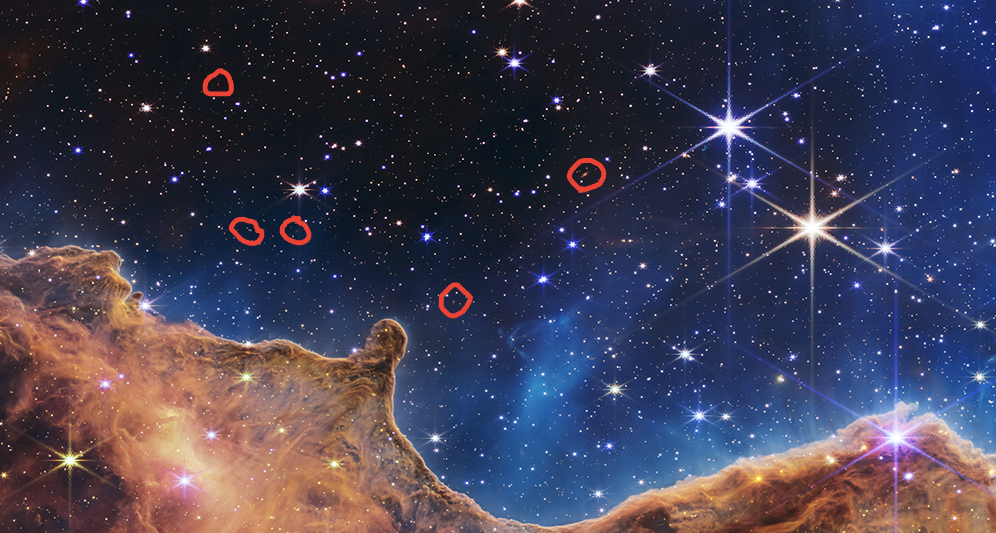
On the less dusty side of the Cosmic Cliffs in the Carina Nebula, a number of faint, extended objects can be identified among the glittering stars that populate the majority of this region of space. Even in the galactic plane, where star densities are greatest and neutral matter abounds, background galaxies are copious, and will likely appear in practically every JWST image to come.
Even in this dense region of our galaxy, the Universe beyond can be glimpsed.
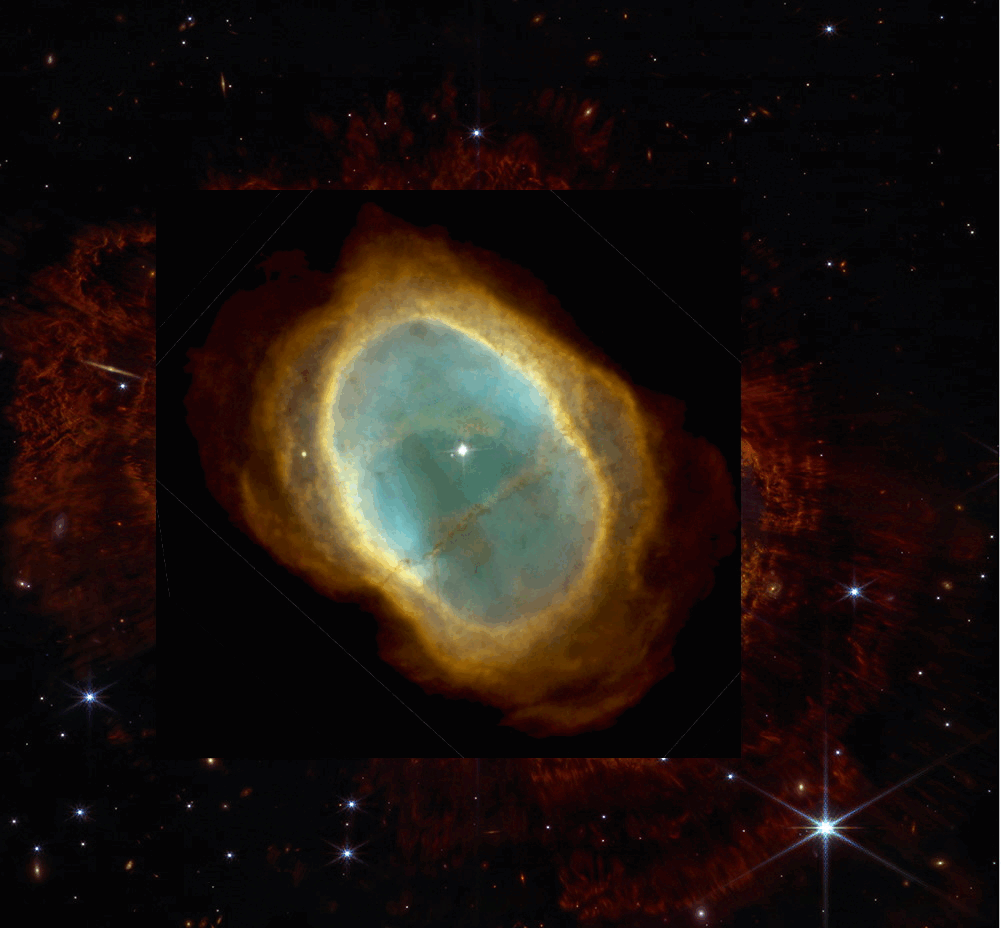
Overlaid with (older) Hubble data, the JWST NIRCam image of the Southern Ring Nebula is clearly superior in a variety of ways: resolution, the details revealed, the extent of the outer gas, etc. It truly is a spectacular reveal of how stars like the Sun end their lives.
The Southern Ring Nebula, a dying, Sun-like star within our own galaxy, also reveals background sources.
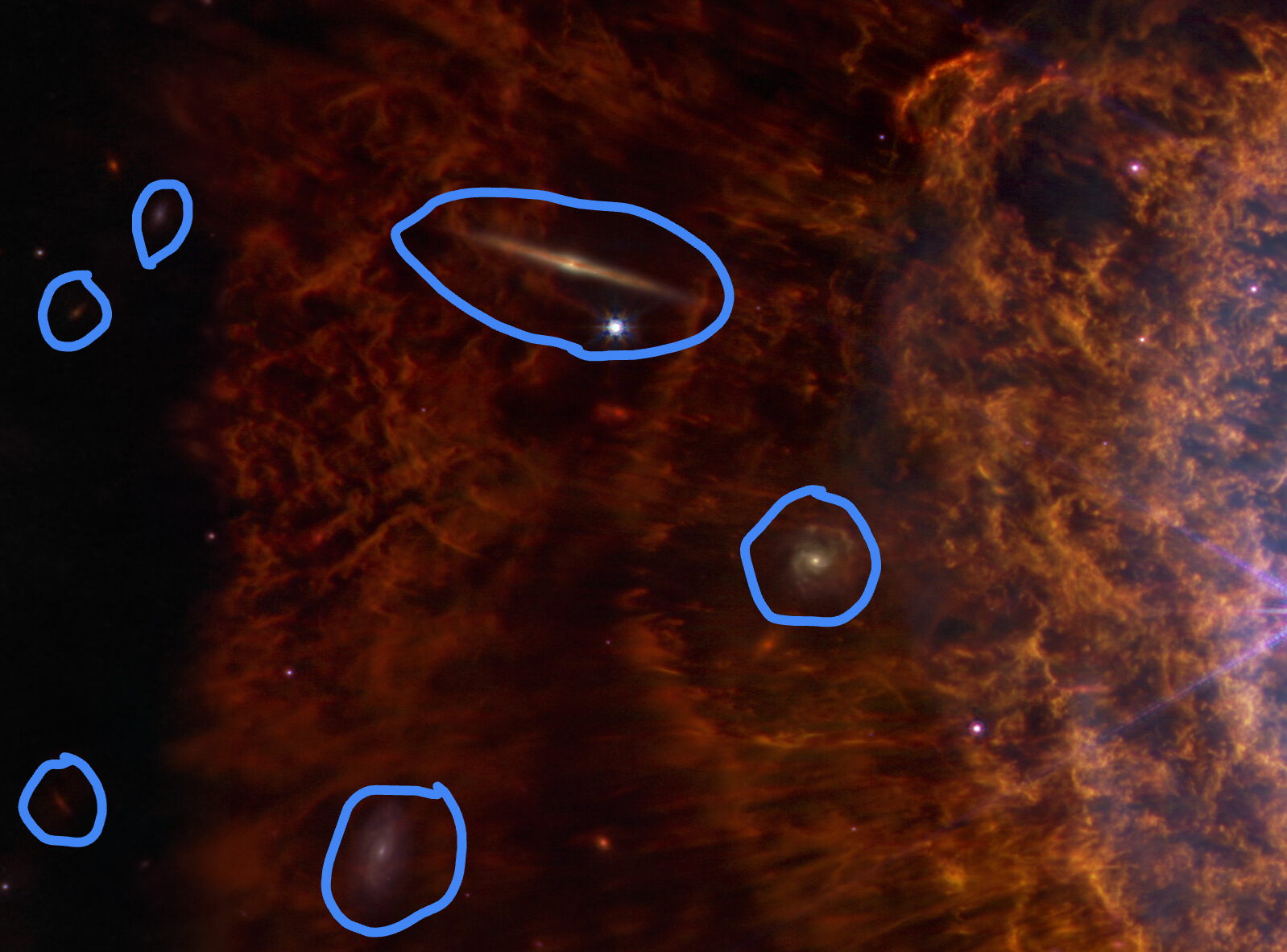
Even where the debris of a dying star within our own galaxy is most luminous and feature-rich, numerous background galaxies can be identified, poking through the otherwise light-blocking dust at infrared wavelengths.
Some galaxies poke through the nebula’s wispy tendrils.
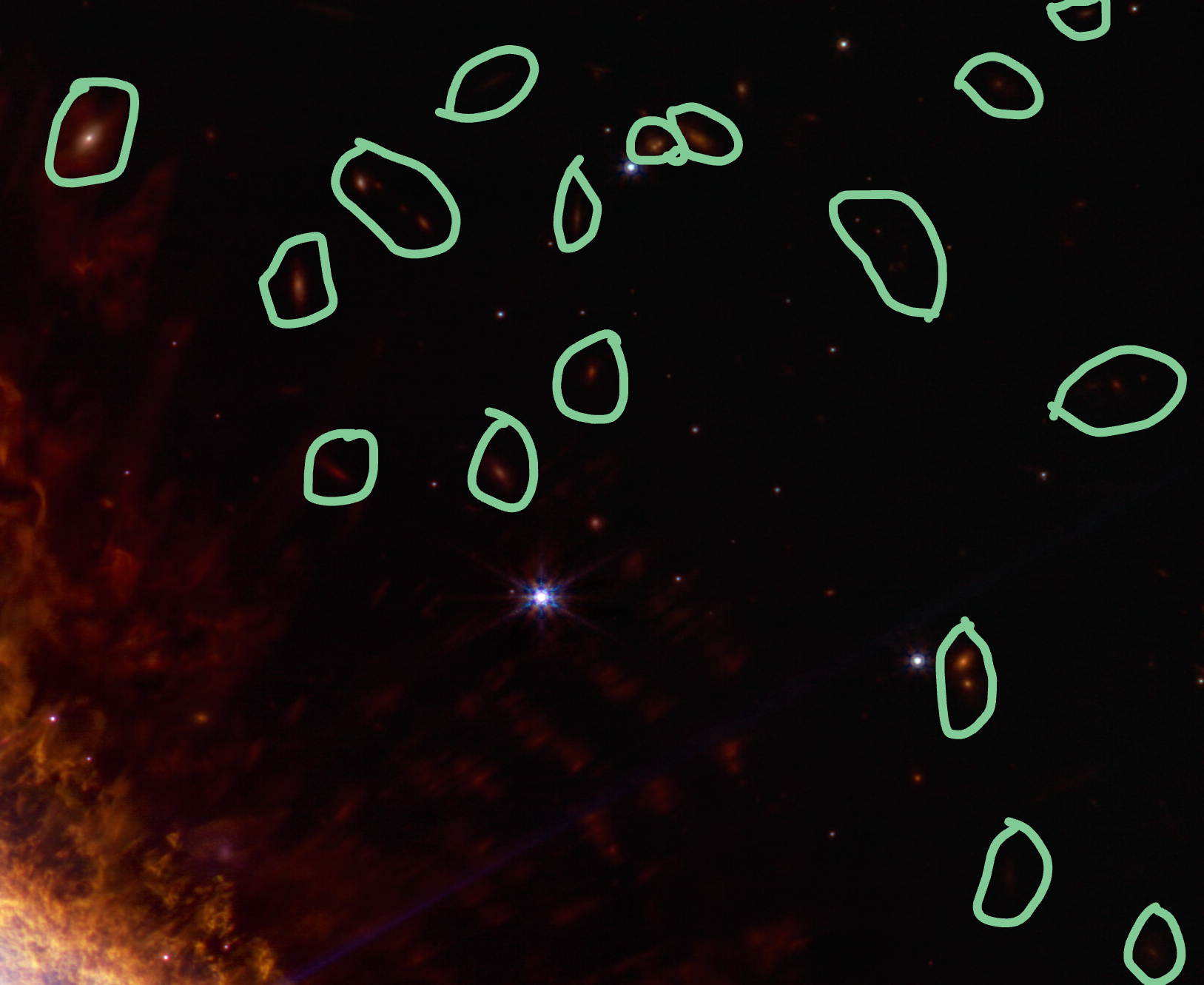
Outside of the nebulous structure of the Southern Ring Nebula, the abyss of empty space gets exposed by JWST’s NIRCam imager. A large number of galaxies and candidate galaxies can be identified, even by hand. Many of these objects had never been seen before, showcasing the power of JWST to reveal the hitherto unknown Universe, even when that wasn’t the science goal of the imaging campaign.
Others richly occupy the space along its outskirts.
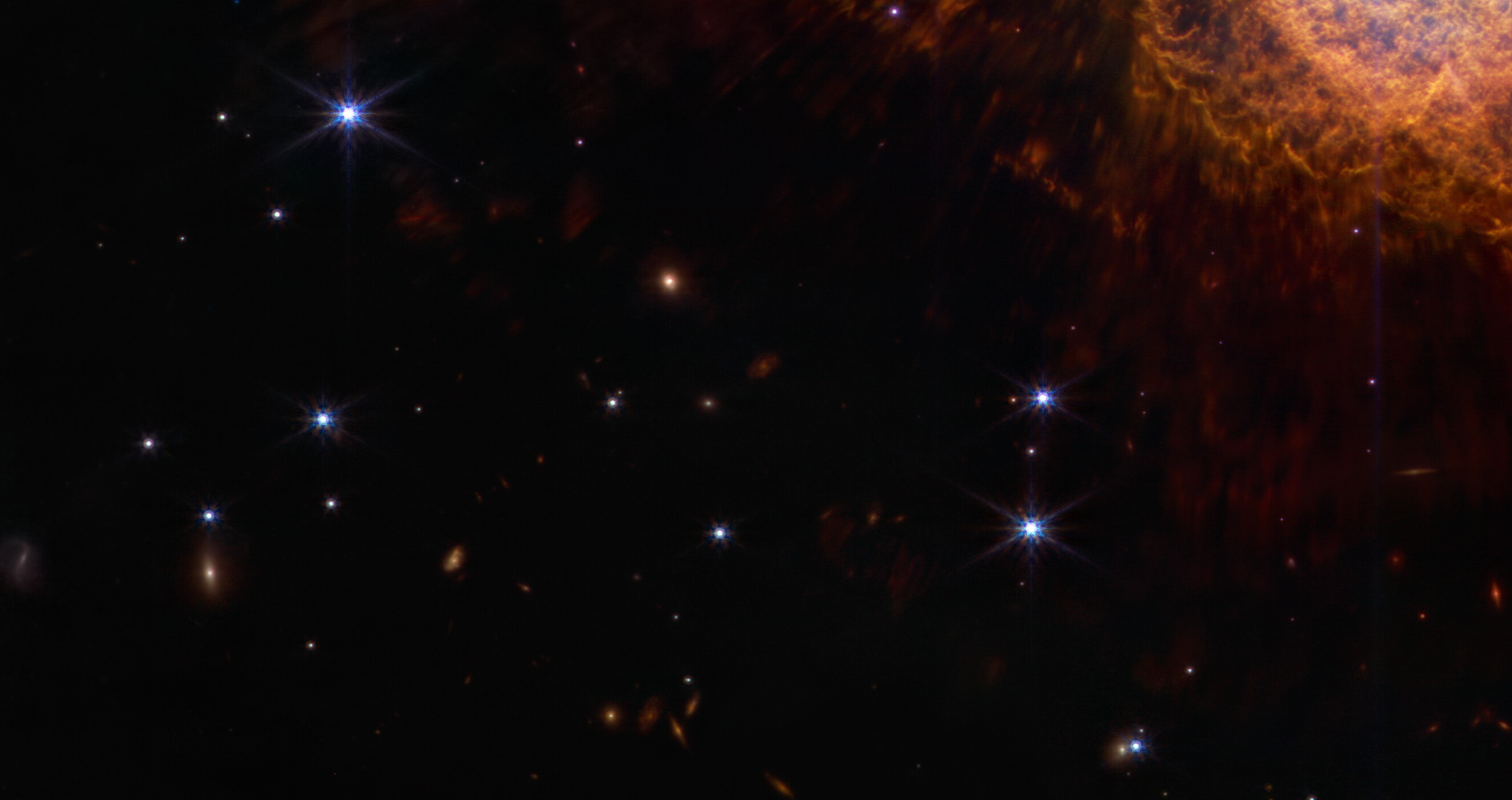
This non-annotated portion of the JWST’s NIRCam instrument’s view of the Southern Ring Nebula reveals the nebula’s edges, a series of multi-spiked stars, and a whole slew of extended objects that can be identified as background galaxies. In every region of space imaged by NIRCam, galaxies await.
In all directions and locations, there’s something spectacular to expose.

This contrast of Hubble’s view of Stephan’s Quintet with JWST’s NIRCam view reveals a series of features that are barely apparent or not obvious at all with a shorter set of more restrictive wavelengths. The differences between the images highlight what features JWST can reveal that Hubble misses. Despite the beauty and awe that this image provides, there are no known planetary systems, in our own galaxy or any other, where humans could survive as we do on Earth.
But JWST’s Stephan’s Quintet image was the most illuminating.
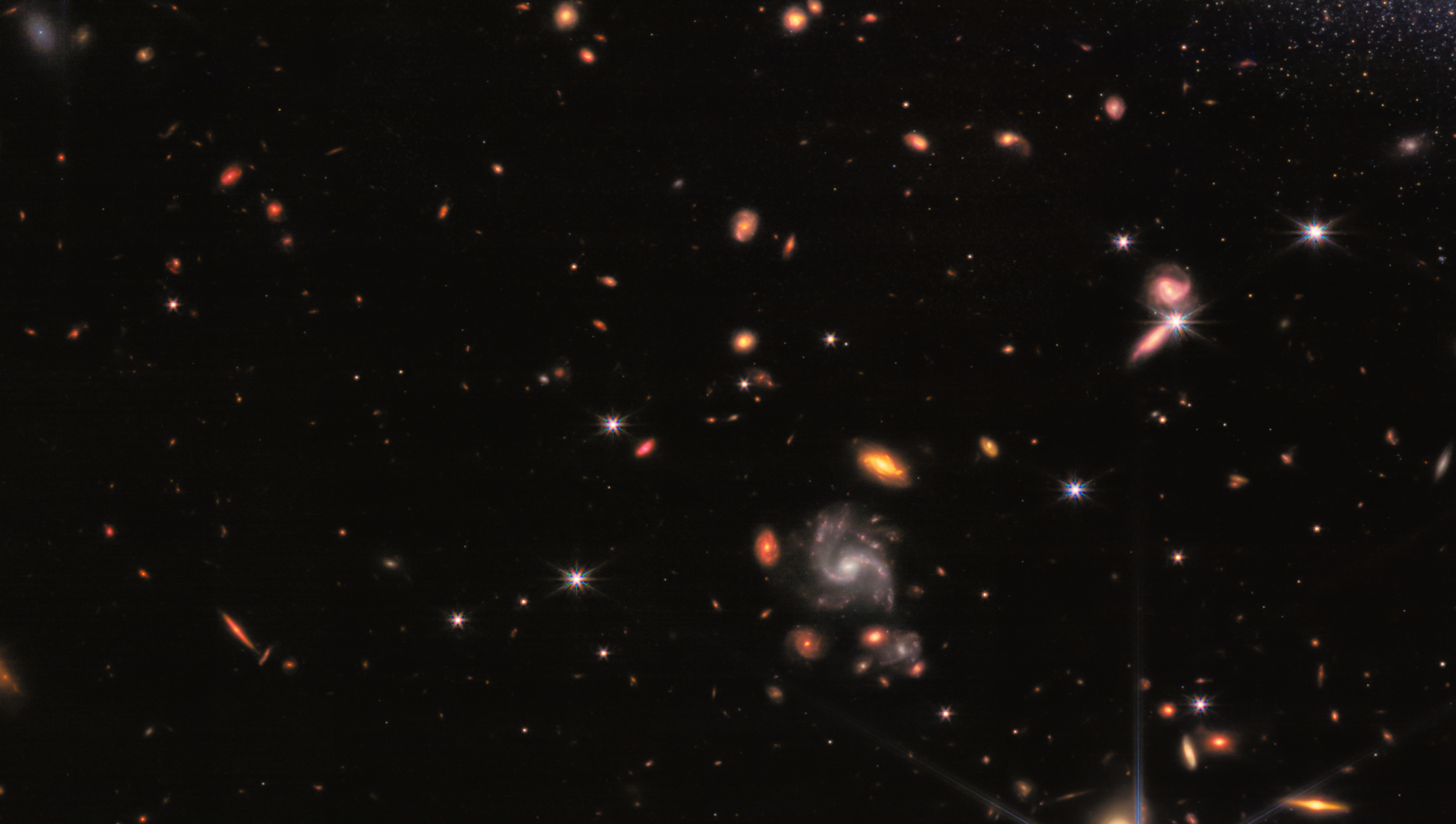
Outside of the five main member galaxies that compose Stephan’s Quintet, the JWST NIRCam view exposes thousands of additional galaxies that exist in the background, hundreds of which can be seen here and many of which have never been identified before via any other instrument or observatory.
Galaxies of all colors,
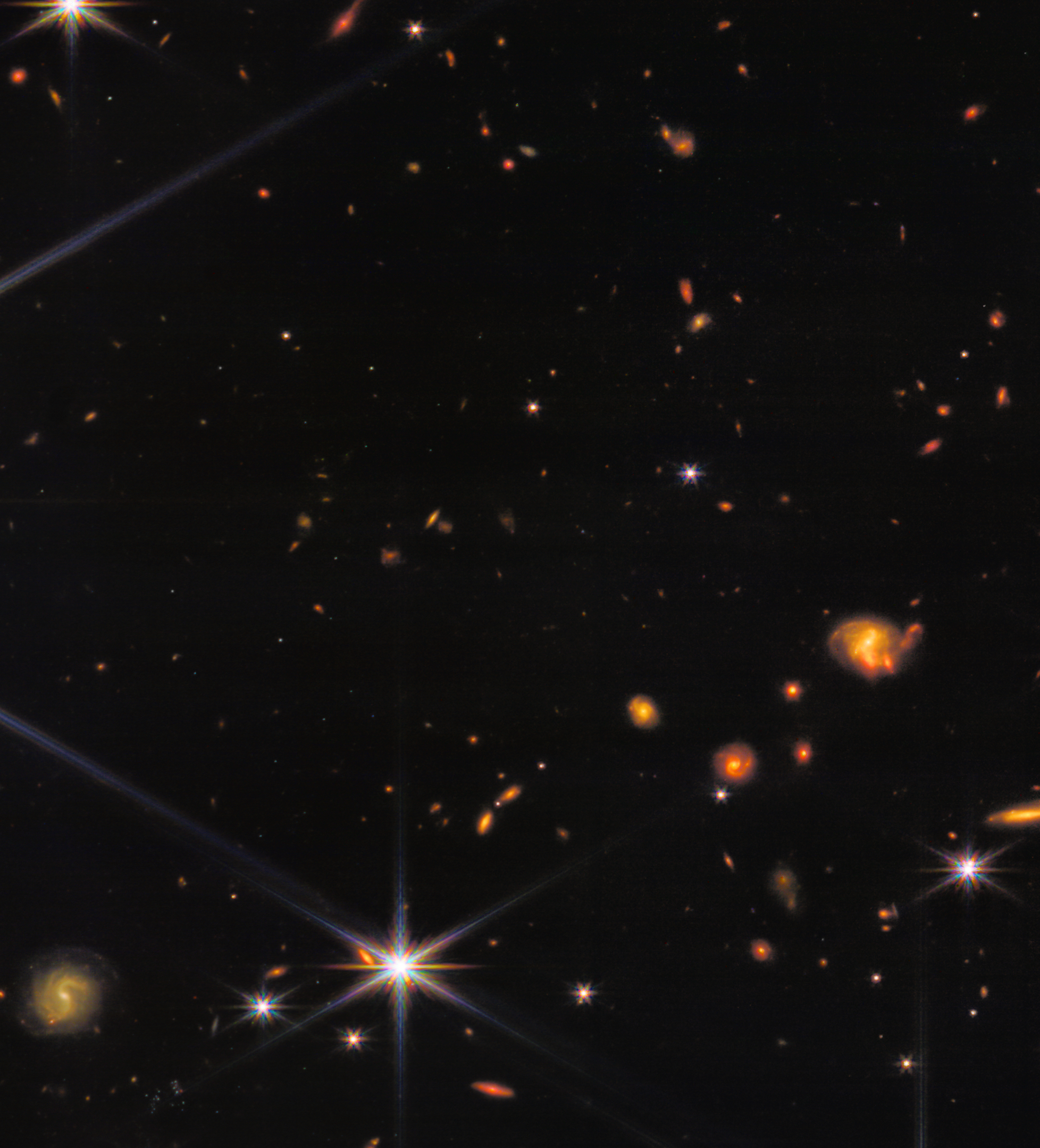
The galaxy colors and shapes revealed here by JWST’s NIRCam are determined not only by the intrinsic color and shape of the galaxies and the stars inside them, but also by the cosmological redshift and the cumulative distortion imprinted by all foreground masses. The resolution of these background galaxies is unprecedented.
shapes,
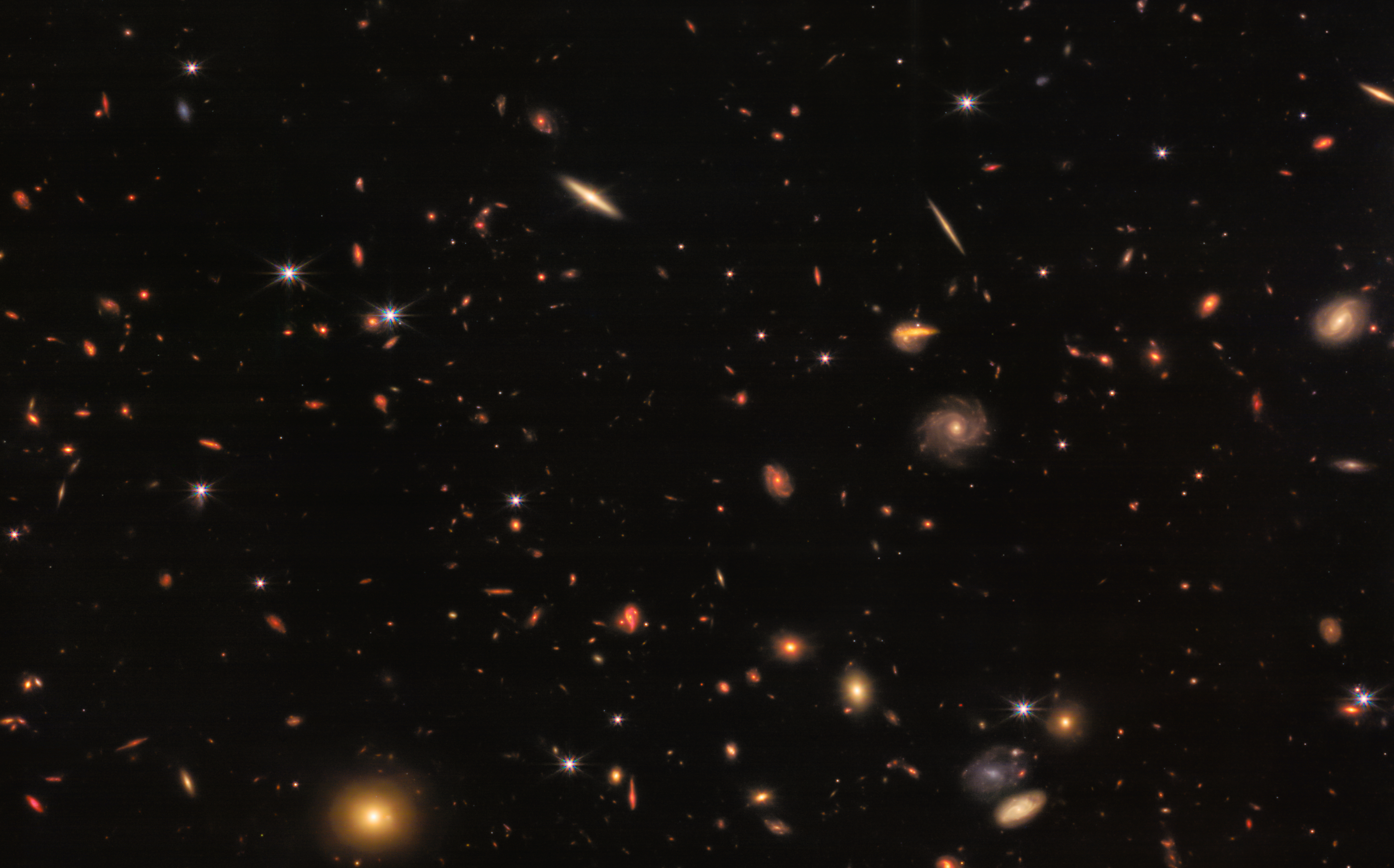
This extremely rich region of space was captured while viewing Stephan’s Quintet with JWST’s NIRCam instrument. Many of these galaxies are clustered together in real space, while others are simply serendipitous alignments along the same line-of-sight. A clustering analysis of regions such as this, many of which will be revealed in great detail by JWST, can provide a tremendous amount of additional science on top of what was planned.
and clustering patterns,
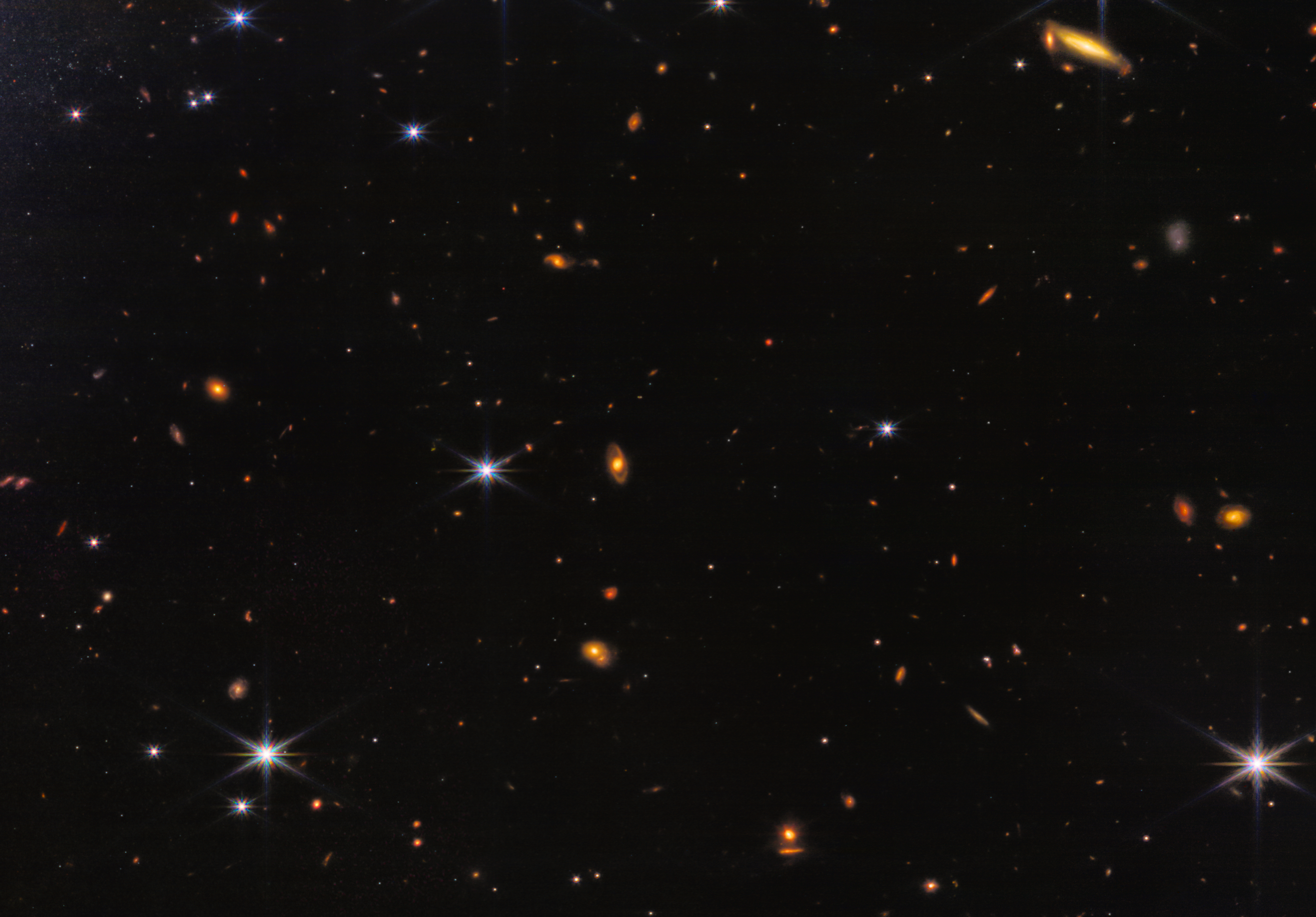
And just as there are many regions of space that have been imaged that are overdense in terms of the number of galaxies and the total mass in that region, there are underdense void-like regions as well. JWST can reveal all of them, wherever it turns its infrared eyes.
can be seen everywhere.
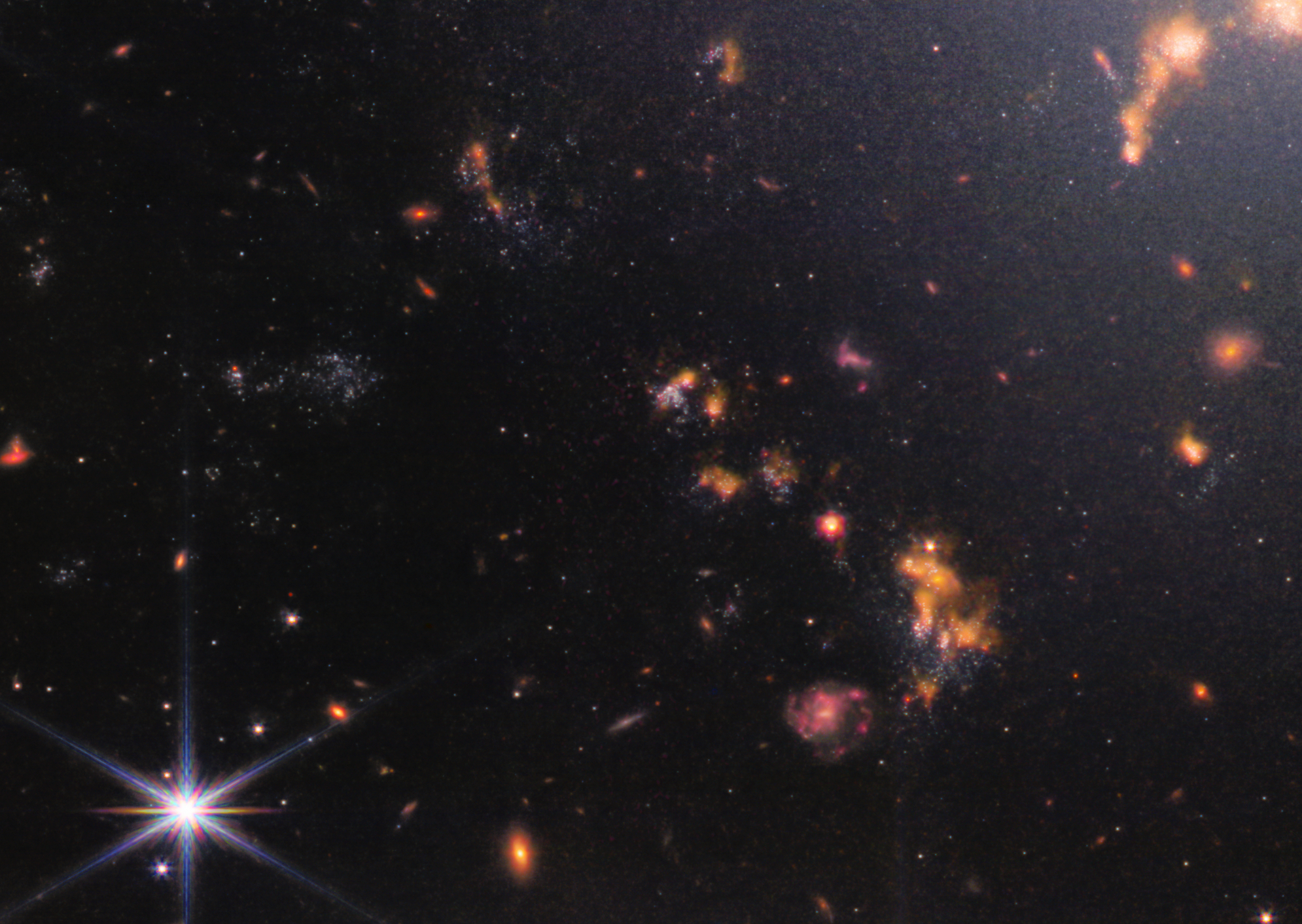
This region, located on the outskirts of the star-forming regions caused by the interaction of multiple galaxy members within Stephan’s Quintet, reveals copious details about nearby star-formation in these galaxies, while simultaneously revealing background galaxies as well. The saying, “One astronomer’s noise is another astronomer’s data” is on full display here, as extragalactic and stellar astronomers of all types can have a field day with what’s been revealed in just this one region of space.
We’ve long said, “One astronomer’s noise is another astronomer’s data.”

The MIRI view of Stephan’s Quintet showcases features that cannot be seen at any other wavelength. Its topmost galaxy – NGC 7319 – harbors a supermassive black hole 24 million times the mass of the Sun. It is actively accreting material and puts out light energy equivalent to 40 billion Suns. MIRI sees through the dust surrounding this black hole to unveil the strikingly bright active galactic nucleus. It’s so bright, to MIRI’s eyes, that it even has the characteristic JWST “spike” pattern to it.
For scientists studying galaxies, every forthcoming JWST image contains a potential treasure trove.
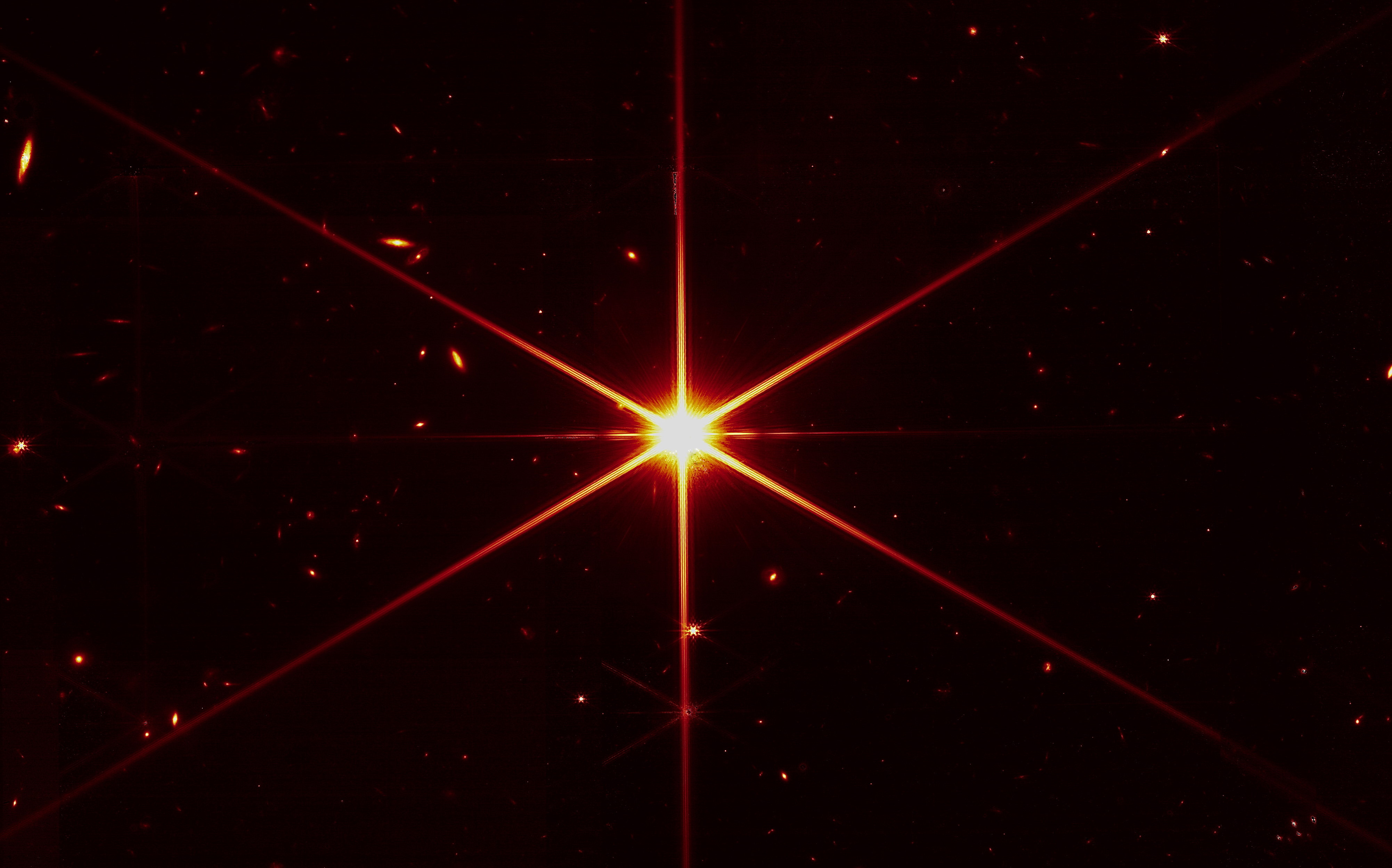
The very first finely-phased image ever released by NASA’s James Webb Space Telescope shows a single image of a star, complete with six prominent diffraction spikes (and two less-prominent ones), with background stars and galaxies revealed behind it. The background galaxies were a surprise to astronomers; JWST is imaging the Universe at roughly double the performance precision it was design-specified for. Even images such as this, not originally designed for scientific purposes, may prove useful to astronomers studying the Universe as a unique and unexpected source of data.
Mostly Mute Monday tells an astronomical story in images, visuals, and no more than 200 words. Talk less; smile more.
Article From & Read More ( The scientific wonder lying behind James Webb's first images - Big Think )https://ift.tt/iKy9kP0
Science
No comments:
Post a Comment